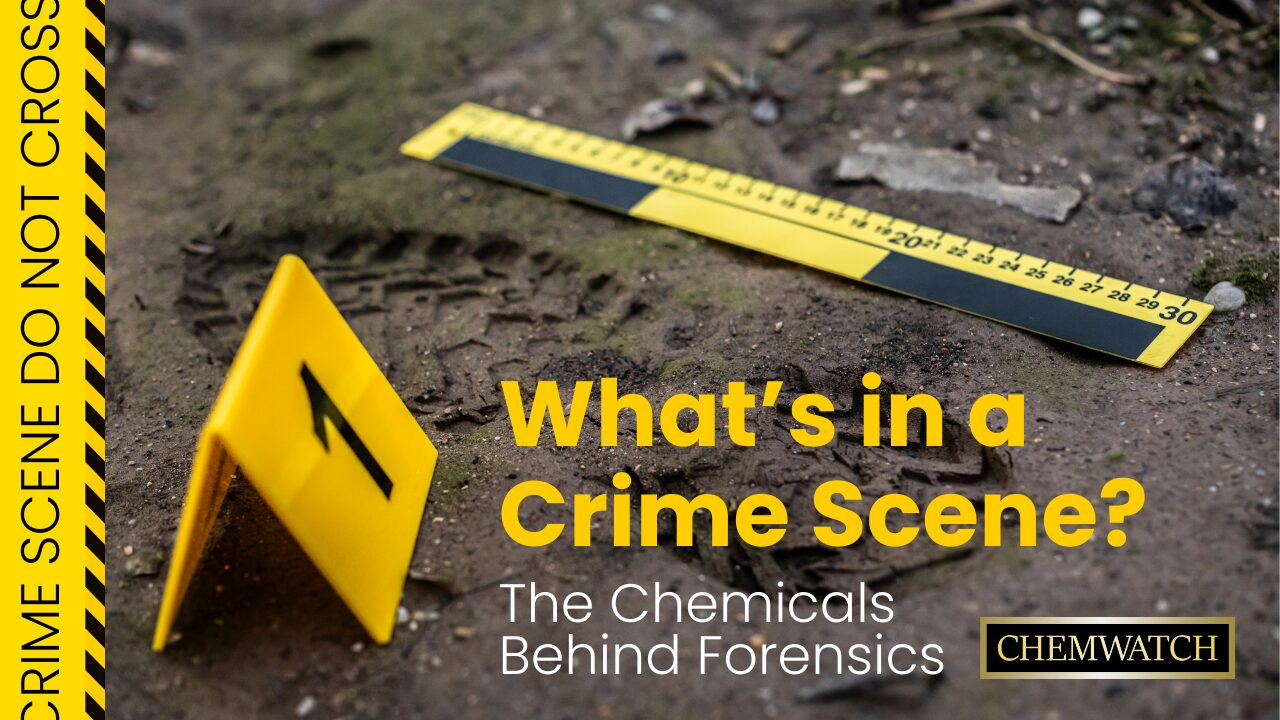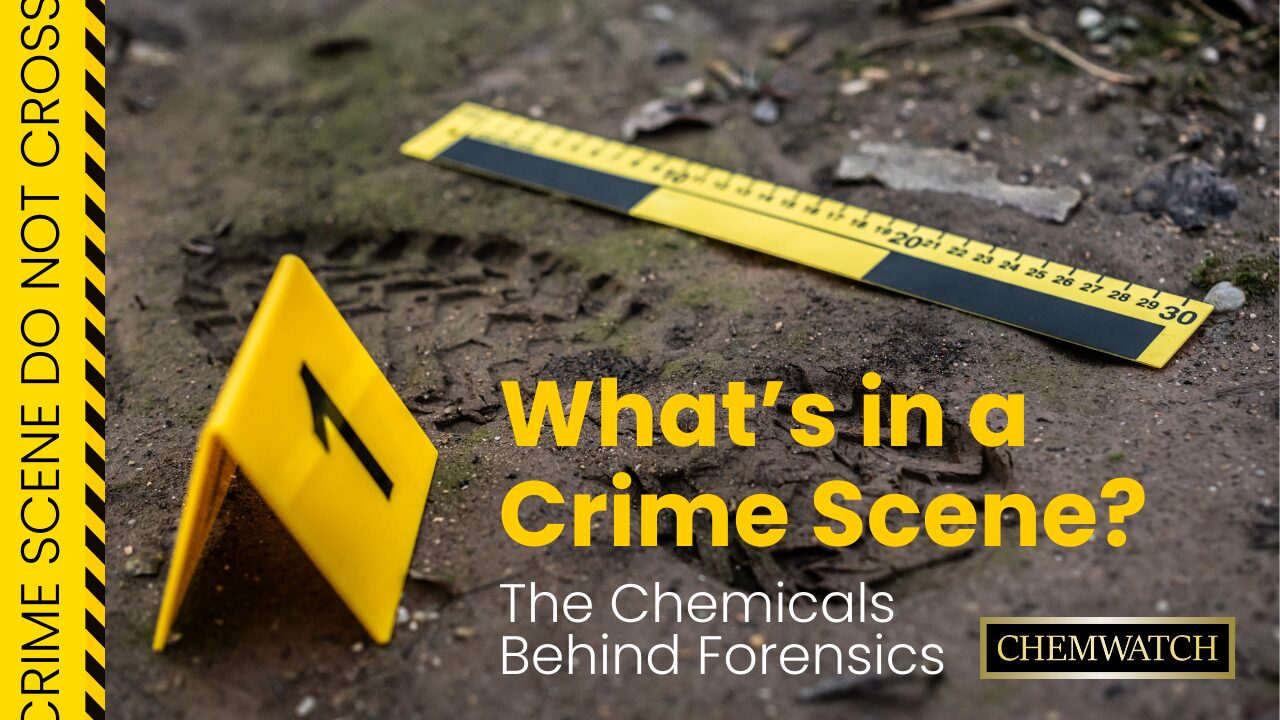
When investigators step onto a crime scene, they enter a space filled with more than just visible evidence. Beneath the surface lies a wealth of chemical information that can reconstruct events, establish timelines, and link suspects to the scene. Forensic chemistry is central to this process, transforming microscopic traces into legally admissible proof.

One of the most essential tools in chemistry-driven crime scene investigations is the use of chemical reagents in forensics. These substances interact with biological materials and trace residues, making the invisible, visible.
For instance, luminol and other chemiluminescent reagents react with hemoglobin to produce a visible glow—revealing bloodstains even after cleaning. Meanwhile, forensic fingerprint analysis relies on chemical reagents such as ninhydrin, silver nitrate, iodine vapor, and cyanoacrylate (Super Glue) fuming. These reagents react with amino acids or oils in fingerprints, developing ridge patterns crucial for suspect identification.
The role of chemistry in forensic science extends far beyond blood and prints. Crime scenes can yield many forensic evidence types, including bodily fluids, fibres, narcotics, soil, paint, gunshot residues, and more. Each of these materials holds distinct chemical signatures that, when properly analysed, can reconstruct what occurred.
Through chemical analysis, forensic experts identify, preserve, and compare these traces to build a comprehensive evidentiary narrative. Whether it's identifying accelerants in arson cases or detecting metal fragments from a weapon, chemistry plays a pivotal role in interpreting physical evidence.
Once evidence is collected, it undergoes in-depth analysis using specialised forensic laboratory techniques. These methods provide the accuracy and precision required to validate findings in a legal context.
Common lab-based techniques include:
Other chemical applications include breath alcohol testing (based on colorimetric reactions using potassium dichromate and sulfuric acid) and fingerprint enhancement with chemical reagents.
Increasingly, forensic chemistry is moving from the lab to the scene. Portable GC-MS units and spectrometers now enable on-site chemical testing, accelerating investigations while ensuring evidence integrity.
Chemistry isn’t confined to laboratories - on-site forensic chemists play a critical role in stabilising and preserving delicate evidence. From trace residues on clothing to degraded blood samples exposed to weather, environmental conditions can quickly compromise chemical evidence.
Chemistry in crime scene investigation ensures that fragile evidence remains viable for lab analysis. Portable reagent kits, mobile spectrometry devices, and rapid DNA detection tools allow investigators to screen samples and make informed decisions in the field, increasing the speed and reliability of investigations.
DNA analysis in forensics has become a cornerstone of modern investigations. Its strength lies in its ability to produce statistically robust matches between individuals and biological samples - even from tiny amounts of material.
Key chemically-driven stages of forensic DNA profiling include:
By applying chemical reagents and following strict protocols, forensic laboratories extract reliable, legally admissible data from even degraded or contaminated samples.
Forensic chemistry forms the scientific backbone of crime-solving today. Whether it’s detecting explosive residues, performing forensic toxicology tests, or analysing trace DNA, chemistry allows investigators to identify hidden clues and reconstruct events with scientific precision.
As technology evolves, forensic techniques continue to improve. The integration of GC-MS, DNA analysis, and field-based chemical testing enhances the speed and accuracy of investigations. These advances ensure that even the smallest chemical traces can provide critical leads—ultimately contributing to the pursuit of justice.
At Chemwatch, we understand the critical role that chemical safety and accurate data play in forensic investigations. Our platform provides access to an extensive library of up-to-date Safety Data Sheets (SDSs), including information on forensic reagents, toxic substances, and analytical chemicals used in crime scene investigation chemicals. With advanced tools for chemical inventory management, risk assessment, and regulatory compliance, Chemwatch empowers users with the information and systems needed to support science-driven investigations.
Sources